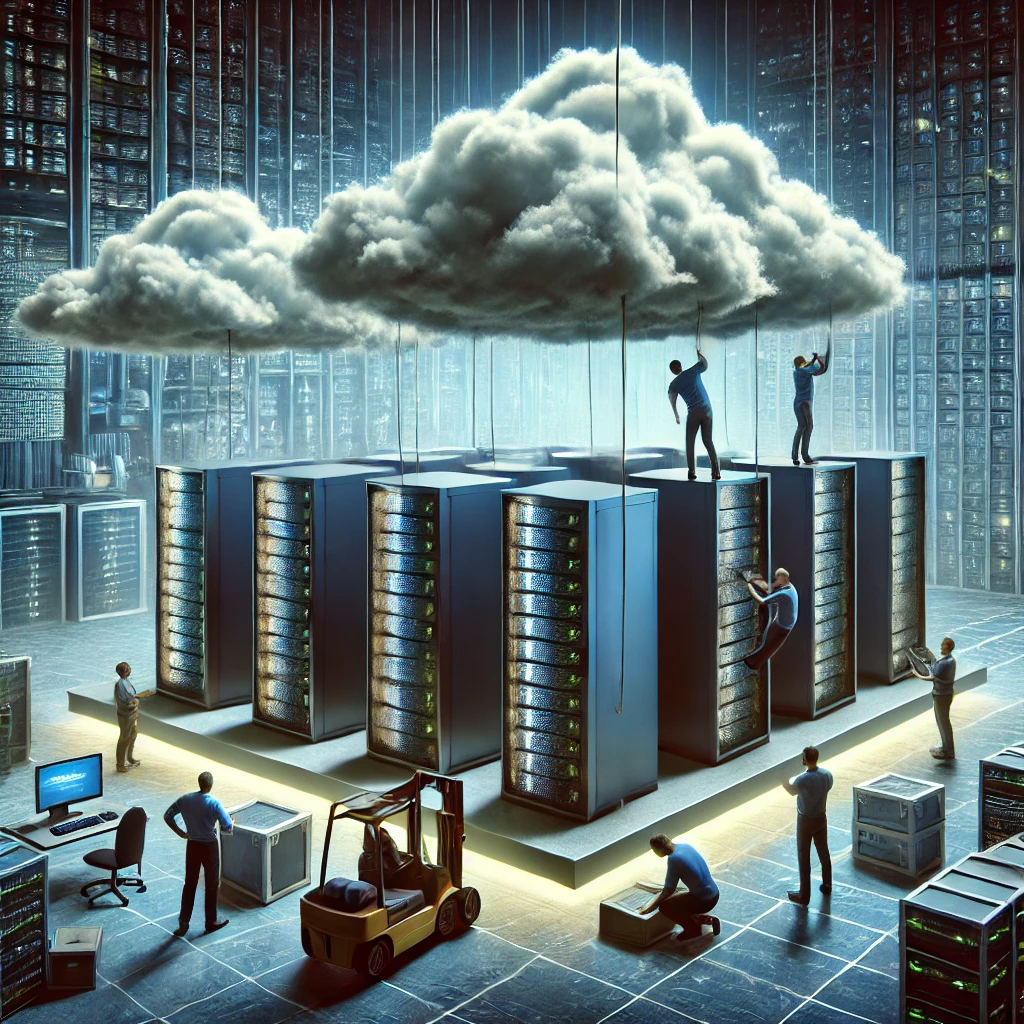Is Cloud Computing Fading? The Shift Back to On-Prem and On-Device

Table of Contents
Is Cloud Computing Fading? The Shift Back to On-Prem and On-Device
Cloud computing was once the golden child of tech—promising scalability, cost savings, and freedom from bulky hardware. Companies rushed to ditch their server rooms, uploading everything from payroll to petabytes of data into the sky. But lately, there’s a murmur: the cloud might be losing its shine. Businesses are pulling workloads back to on-premises setups, and users are turning to on-device solutions powered by local AI. Is this the end of cloud computing as we know it? Let’s unpack the signs and see what’s driving people back to earth.
The Cloud’s Rise—and Its Stumbles
For years, the cloud was unstoppable. Gartner predicted in 2021 that by 2025, half of all enterprise IT spending would shift to the cloud, up from 41% in 2022 (ZDNet, “What is cloud computing?”, 2021). It made sense: why buy servers when you could rent them, scaling up or down as needed? The pandemic turbocharged this trend, with lockdowns pushing firms to remote-friendly cloud setups overnight. Tech analyst IDC pegged cloud infrastructure spending at $71.8 billion in 2021, growing 8.3% from the year before (ZDNet, 2021).
But the honeymoon’s showing cracks. A Citrix survey last year found 94% of 350 U.S. business and IT leaders had moved some cloud workloads back to on-premises in the prior 12 months (IT Brew, “Nearly all business and IT leaders surveyed…”, 2024). Why? Unexpected costs (29% cited this), security worries (41%), and unmet expectations (23%) topped the list. The cloud’s promise of savings often comes with a catch—hidden fees, egress charges, and spiralling bills when usage spikes. Calvin Hsu from Citrix told IT Brew that post-pandemic contract renewals are forcing a hard look at those costs, hinting that the cloud’s “all-in” era might be cooling off.
The Pull of On-Premises: Control and Predictability
One big reason for the shift is simple: control. On-premises setups let companies own their hardware and call the shots. InfoWorld’s David Linthicum noted in 2023 that data centre hardware prices dropped 3.9% month-over-month, while cloud costs rose 2.3% (InfoWorld, “Cloud computing is no longer a slam dunk,” 2023). For steady workloads—like a childcare centre’s daily attendance tracking—the amortised cost of a server can beat the cloud’s pay-as-you-go model over time. TechCrunch echoed this in 2023, pointing to “cloud sprawl”—where sprawling workloads balloon expenses—and cited Walmart’s move to edge compute in stores, saving 18% annually by blending on-prem with cloud (TechCrunch, “The cloud backlash has begun,” 2023).
X posts reflect this sentiment too. @SkyhighSecurity wrote on February 18, 2025, that enterprises are rethinking cloud strategies, pivoting to on-prem or hybrid setups for cost and security (X post). It’s not a full retreat—70% of Citrix’s respondents still see a cloud future—but a recalibration. Firms want predictable budgets and hands-on security, especially for sensitive data like MoE compliance records, where sovereignty laws add pressure to keep things local.
On-Device: The AI-Powered Game Changer
Then there’s the wildcard: on-device computing, fueled by AI. Cloud AI—like ChatGPT—relies on massive server farms, but small language models are flipping the script. These compact AIs run right on your laptop or phone, no internet needed. @bobodtech on X noted on February 20, 2025, that high-performing on-device AI is set to reshape app development and hardware demands (X post, TechSpot link). Think of Rostiny’s AI answering “What’s due this week?” without a cloud ping—it’s fast, private, and works offline.
This trend’s not just for work. Games could embed AI to tweak enemies or dialogue on the fly, all on your console. The cloud’s lag and privacy risks—sending data over shaky Wi-Fi—don’t cut it when devices like a 16GB RAM laptop can handle the load. Transforming Network Infrastructure warned in 2023 that IoT’s real-time needs (e.g., smart devices acting instantly) outstrip the cloud’s reach, pushing edge and on-device solutions (Transforming Network Infrastructure, “Black Clouds Ahead,” 2023). As hardware gets smarter, why lean on the cloud?
Why the Shift? Costs, Privacy, and Power
Three forces are at play. First, costs: Cloud bills are climbing as providers tack on fees, while on-prem hardware gets cheaper. Second, privacy: Data breaches and regulations (U.S. and EU sovereignty laws) make local control appealing—TechCrunch flagged this as a cloud headache in 2023. Third, power: Modern devices can run AI and apps locally, cutting the cloud’s middleman role. Oxford Economics noted in 2023 that enterprise tech spend is tilting away from telecom and toward internet/cloud, but on-prem’s resurgence suggests a hybrid twist (Oxford Economics, “Shift of business tech spend…”, 2023).
Is the Cloud Really Dying?
Not quite. Cloud computing isn’t vanishing—it’s evolving. IDC still sees cloud infra spending hitting $118.8 billion by 2025 (ZDNet, 2021), and 47% of firms in a 2024 Flexera survey pursue cloud-first strategies (Cloudzero, “101 Shocking Cloud Computing Statistics,” 2024). But the blind rush to “cloud everything” is fading. Companies are cherry-picking: cloud for bursts, on-prem for stability, on-device for speed and privacy. Citrix’s Hsu nailed it—workloads aren’t static, and smart firms keep options open (IT Brew, 2024).
For childcare admins or gamers alike, the lesson’s the same: the future isn’t all sky-high. On-prem offers roots, on-device brings smarts home. The cloud’s still here, but it’s sharing the stage—and that might just be the balance we need.